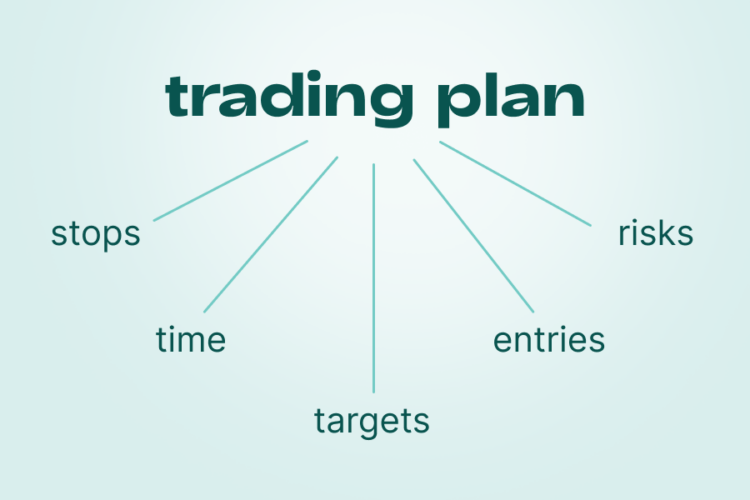In the shimmering world of gold trading, where fortunes can be made or lost with the flicker of a market chart, mastering the art of successful trading is akin to finding a golden key to unlock vast treasures.
This article delves into the essential tools, techniques, and timing strategies that can pave the path to prosperity for both novice and experienced traders alike. From understanding the intricate dance of market indicators to the disciplined approach of risk management, we embark on a journey to unravel the secrets of trading gold effectively.
Prepare to equip yourself with the knowledge and insights needed to navigate the golden waves of the market, turning volatility into opportunity and ambition into achievement.
Page Contents
Tools for Gold Trading

Source: worldfinancialreview.com
Gold trading has evolved significantly over the years, offering traders a variety of platforms and tools to engage with the market. Among the most prominent platforms is MetaTrader 4 (MT4), widely recognized for its advanced trading capabilities and user-friendly interface.
MT4 caters to gold traders through its comprehensive suite of analytical tools, including advanced charting capabilities, technical indicators, and automated trading systems.
Whether you’re interested in trading physical gold, gold ETFs (Exchange-Traded Funds), futures contracts, or CFDs (Contracts for Difference), MT4 provides a robust environment for executing trades and analyzing market trends. Its versatility makes it a preferred choice for traders at all levels, facilitating access to global markets and a wide range of financial instruments.
Within the realm of gold trading on platforms like MT4, the term XAUUSD becomes crucial.
What is XAUUSD?
XAUUSD is the ticker symbol representing the price of one troy ounce of gold in U.S. dollars. This symbol is fundamental in the forex market, where gold is considered a currency just like the euro or the yen. Trading gold against the U.S. dollar (XAUUSD) allows traders to speculate on the price movements of gold, taking advantage of its status as a safe-haven asset during times of economic uncertainty.
Understanding how to trade XAUUSD is essential for anyone looking to diversify their investment portfolio with gold, as it encapsulates the dynamic interplay between the value of gold and the strength of the dollar on a global scale.
Fundamental Analysis in Gold Trading

Source: tradegoldonline.com
Fundamental analysis plays a crucial role in gold trading, as it involves evaluating various macroeconomic indicators, geopolitical events, and supply-demand dynamics that can significantly influence gold prices.
Key factors such as inflation rates, interest rates, geopolitical tensions, and changes in supply and demand directly impact the valuation of gold.
For instance, gold is often seen as a hedge against inflation; when inflation rates rise, the value of currency decreases, leading investors to seek refuge in gold, thereby driving up its price.
Similarly, low-interest rates can make gold, which does not yield interest, more attractive compared to interest-bearing assets. Geopolitical uncertainties and tensions can also prompt investors to move towards gold, considered a safe-haven asset during times of financial instability.
Understanding how to interpret economic reports and news is vital for making informed trading decisions in the gold market.
Traders should pay close attention to central bank policies, inflation reports, employment data, and other economic indicators that can give insights into the market’s direction. For example, announcements on interest rate changes by major central banks can lead to immediate price fluctuations in the gold market.
Additionally, reports on geopolitical events or shifts in supply and demand due to mining disruptions or changes in consumer electronics manufacturing, which uses gold, can also influence gold prices. Successful traders often combine these fundamental analyses with technical analysis to develop a comprehensive trading strategy, allowing them to anticipate market movements and position their trades accordingly.
Technical Analysis Techniques

Source: youtrading.com
Technical analysis is an essential tool for traders in the gold market, enabling them to predict future market movements by examining historical price patterns and trends. Key concepts in technical analysis include support and resistance levels, trend lines, and moving averages, all of which are crucial for making informed trading decisions.
Support levels represent the price point at which a declining price is expected to pause or rebound due to a concentration of demand, while resistance levels are where a rising price tends to stall or reverse due to a concentration of selling interest.
Trend lines, drawn between two or more price points, help traders identify the direction of the market movement, whether it’s upward, downward, or sideways. Moving averages smooth out price data over a specific period, providing insights into the underlying trend by filtering out the day-to-day price fluctuations.
Popular technical indicators that are widely used in gold trading include the Moving Average Convergence Divergence (MACD), the Relative Strength Index (RSI), and Bollinger Bands. The MACD helps identify momentum shifts by showing the relationship between two moving averages of the price, offering signals for potential buy or sell opportunities.
The RSI measures the speed and change of price movements to indicate overbought or oversold conditions, helping traders predict reversals. Bollinger Bands consist of a middle band being a moving average, with upper and lower bands providing volatility-based price envelopes, aiding in identifying volatility and potential price breakouts or breakdowns.
The importance of chart patterns in predicting market movements cannot be overstated.
Patterns such as head and shoulders, double tops and bottoms, and triangles provide traders with visual cues on future price movements, offering opportunities for entry or exit. These patterns, when combined with other technical analysis tools, can help traders anticipate market turns and volatility.
Recognizing these patterns and understanding their implications allows traders to strategically position their trades, maximizing the potential for profit while minimizing risk.
By integrating these technical analysis techniques, traders can develop a more nuanced understanding of the gold market, enabling them to make more precise and informed trading decisions.
Risk Management in Gold Trading

Source: fullertonmarkets.medium.com
Risk management is a fundamental aspect of successful gold trading, as it helps traders protect their investments from significant losses.
One of the most effective risk management tools is the use of stop-loss orders. A stop-loss order is an order placed with a broker to buy or sell a specific stock or asset once it reaches a certain price. In the context of gold trading, setting stop-loss orders helps traders limit their losses by automatically closing out a position at a predetermined price level, preventing further loss if the market moves unfavorably.
Additionally, managing leverage is crucial in gold trading. While leverage can amplify returns, it also increases the potential for significant losses.
Therefore, traders must use leverage cautiously, understanding the implications of leveraged positions and ensuring they are not overexposed to market fluctuations.
Diversification is another key technique for mitigating risks in gold trading. By spreading investments across different assets or types of gold investments, such as physical gold, gold ETFs, futures, and stocks of gold mining companies, traders can reduce the impact of a poor performance in any single investment.
This strategy helps in balancing the portfolio, as different assets may react differently to market changes. Furthermore, the role of psychological discipline cannot be overstated. Emotional decision-making can lead to impulsive and risky trading behaviors.
Traders must maintain discipline, sticking to their trading plan and risk management strategies even in volatile or unfavorable market conditions. This includes resisting the temptation to overtrade or deviate from set stop-loss levels due to fear or greed.
By maintaining a disciplined approach and making objective decisions based on thorough analysis rather than emotional reactions, traders can navigate the complexities of the gold market more effectively, optimizing their chances for success while minimizing risks.
Developing a Trading Plan

Source: fbs.com
Developing a personalized trading plan is vital for any gold trader looking to achieve long-term success.
This plan should be tailored to the individual’s trading goals, risk tolerance, and investment horizon, incorporating predefined entry and exit strategies, risk management techniques, and criteria for selecting trades.
It’s equally important to commit to continuous learning and adapting the plan in response to market changes and personal trading experiences.
Keeping a detailed trading journal is an invaluable tip for this process; it allows traders to record their trades, including the rationale behind each decision and the outcome, providing insights that can be used to refine strategies and improve future performance.
This practice not only helps in identifying successful patterns and strategies but also in recognizing and correcting recurring mistakes, thereby enhancing the trader’s ability to make informed decisions and adjust their approach to the ever-changing dynamics of the gold market.





